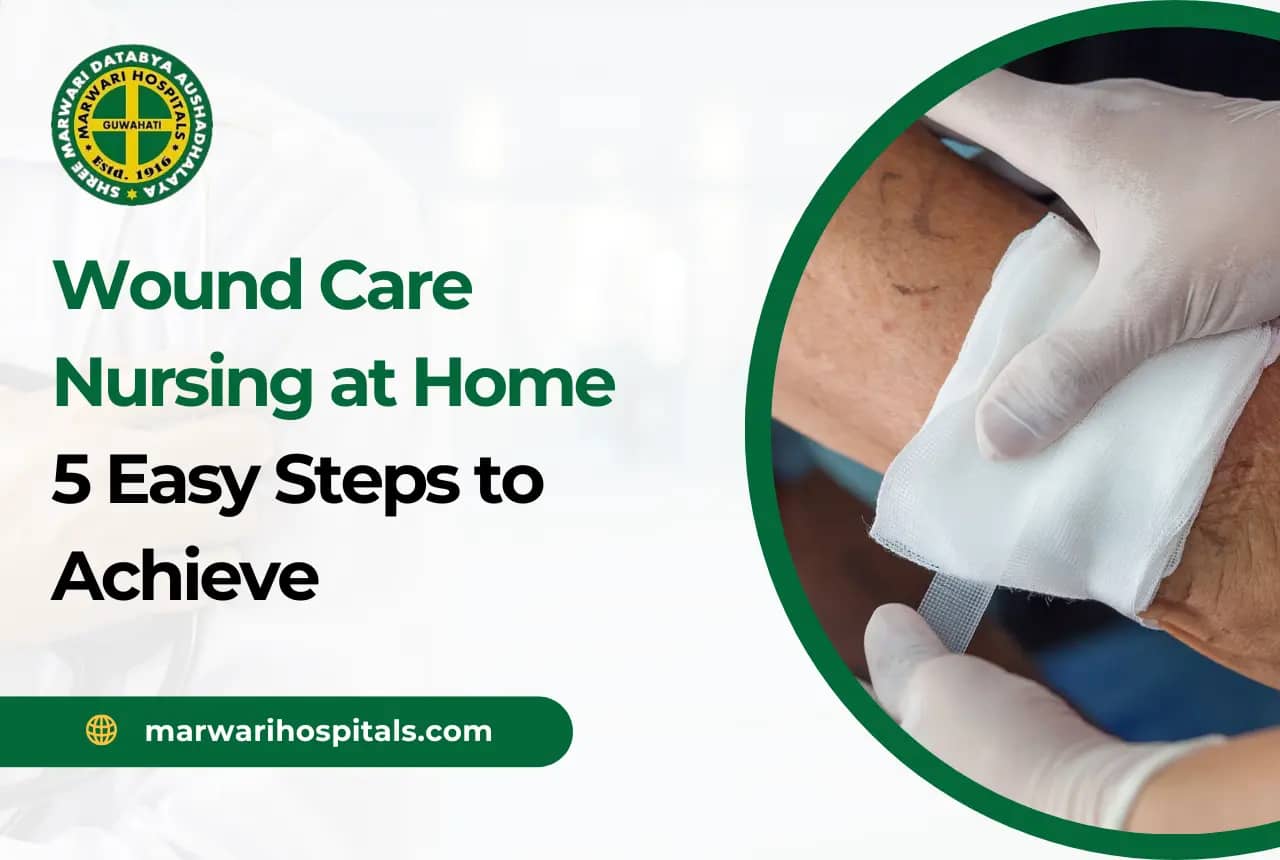Wounds are a part of daily life, hence wound care nursing at home becomes an important avenue. As wound care nursing doesn’t always have to take place in a hospital setting. in-home wound care services offer a convenient and comfortable alternative, allowing patients to heal in the familiarity of their own homes.
This approach not only alleviates the stress of frequent hospital visits but also provides personalized care tailored to individual needs. This blog post will outline five essential steps for effective home wound care, empowering you to navigate the process with confidence.
Understanding Wound Care Nursing at Home
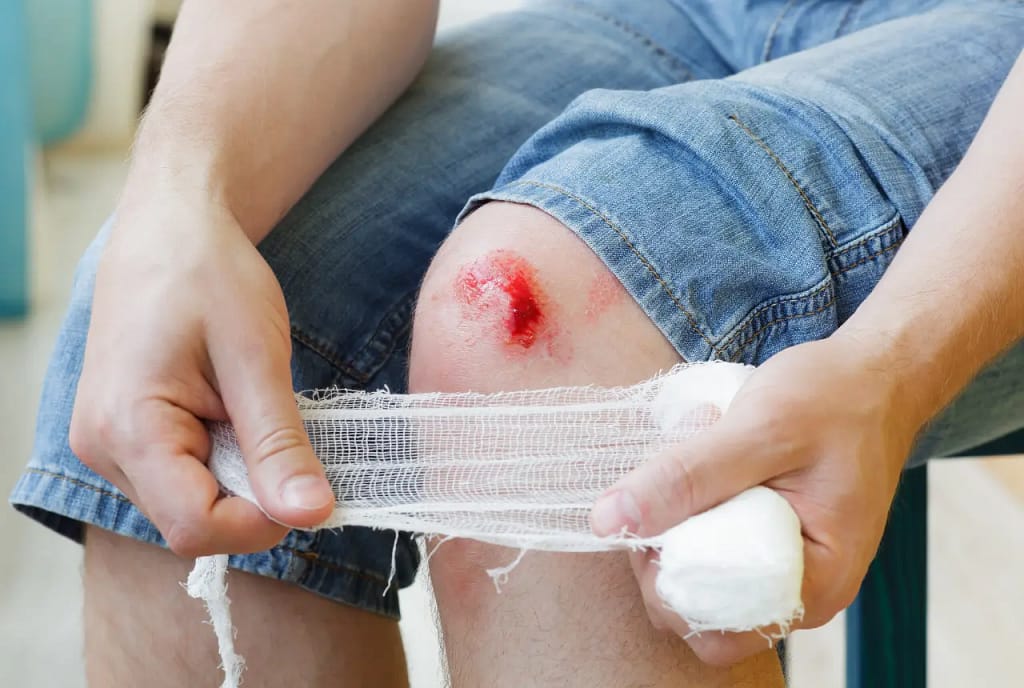
Not all wounds require the sterile environment of a hospital. Certain injuries, like surgical wounds from minor procedures, pressure injuries (bed sores) from prolonged bed rest, and diabetic foot ulcers, can be effectively managed at home with proper guidance.
Wound healing is a complex process, typically divided into four stages:
- Inflammatory Stage: The body immediately responds by controlling bleeding and fighting off infection.
- Proliferative Stage: New blood vessels and tissue are formed to close the wound.
- Maturation Stage: The new tissue strengthens and becomes more like the surrounding skin.
- Remodeling Stage: The scar tissue continues to mature and contract, minimizing its appearance.
While home care offers numerous benefits, it’s crucial to remember that consulting a healthcare professional is essential before attempting any wound care, especially for complex or deep wounds. They will assess the wound severity, determine the appropriate treatment plan, and ensure you have the necessary skills and resources for safe and effective home management.
The 5 Easy Steps to Successful Wound Care Nursing at Home
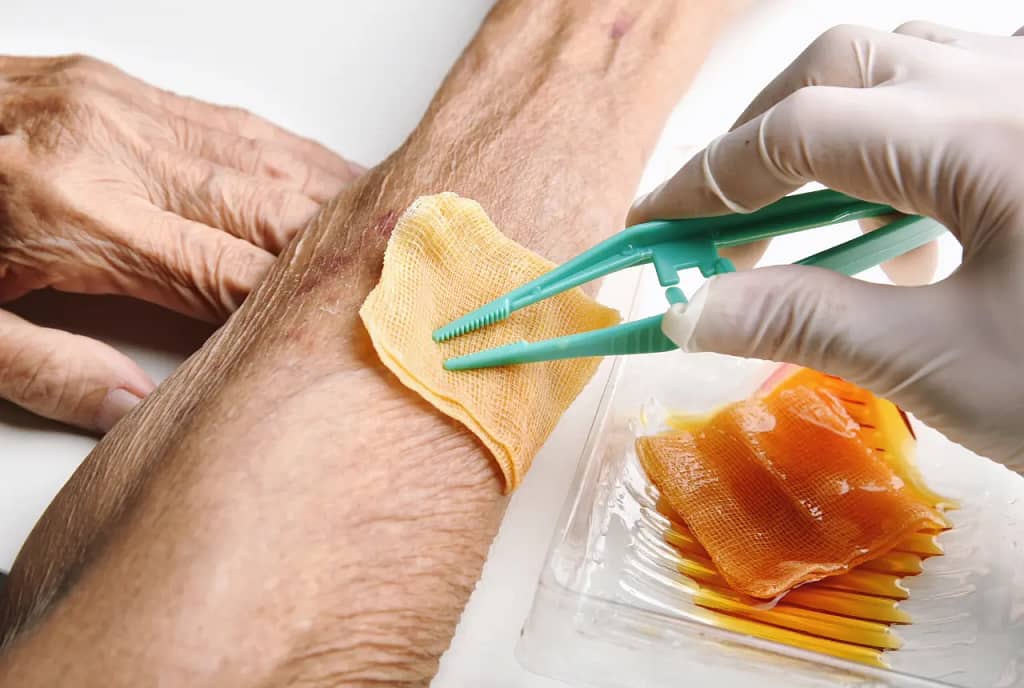
Step 1: Proper Wound Assessment
Regular wound assessment is crucial for monitoring healing progress and identifying any potential complications early on. Look for changes in the wound’s size, color, drainage, and any signs of infection like redness, swelling, or pus. While home care empowers you to participate in your healing journey, remember that a home health nurse or wound care specialist can perform a more comprehensive assessment, provide valuable guidance, and adjust the care plan as needed.
Step 2: Thorough Wound Cleansing
Thorough yet gentle wound cleansing is vital to remove debris, prevent infection, and promote healing. Use the cleansing solution recommended by your healthcare professional, which may be normal saline for most wounds or a specific antiseptic solution for certain cases. Always wash your hands thoroughly and follow sterile technique when cleaning the wound to minimize the risk of introducing bacteria.
Step 3: Choosing the Right Wound Dressing
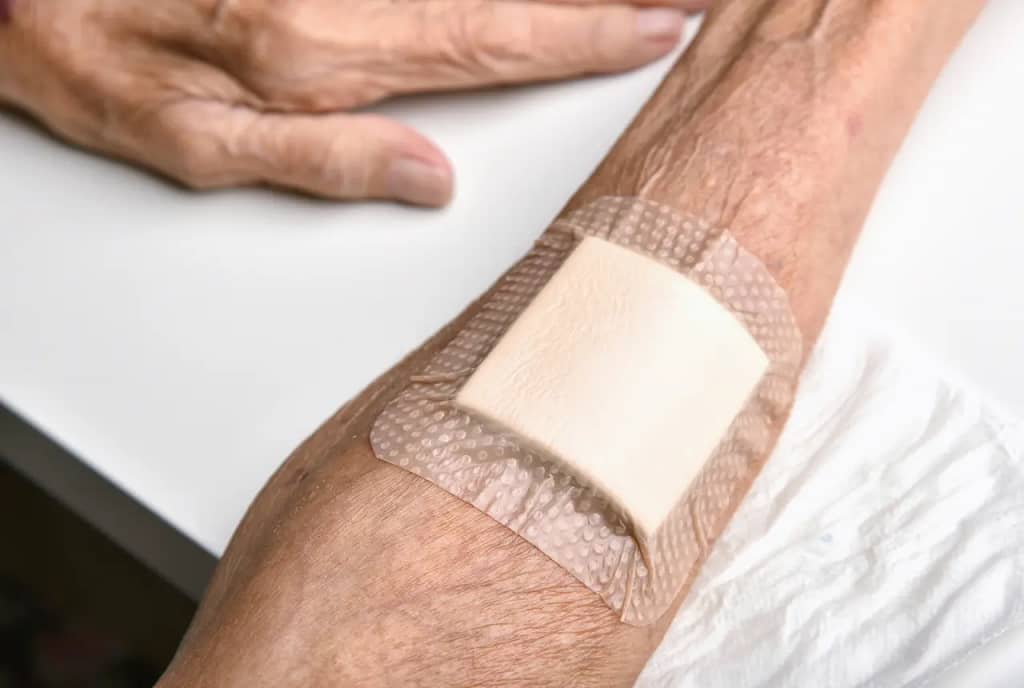
Wound dressings come in various types, each serving a specific purpose. Absorbent dressings are ideal for wounds with moderate to heavy drainage, while moist wound healing dressings create a moist environment that can accelerate healing and minimize discomfort. Selecting the appropriate dressing depends on the wound stage, drainage level, and your healthcare professional’s recommendations. They will also advise on the frequency of dressing changes, which can vary depending on the wound type and chosen dressing.
Step 4: Pain Management and Comfort
Wound care can sometimes be uncomfortable or even painful. Fortunately, various strategies can help manage this discomfort. Distraction techniques like listening to music or reading, and relaxation exercises like deep breathing, can be effective for mild pain. However, for more significant pain, consult your healthcare professional for guidance on appropriate pain medication options.
Step 5: Monitoring and Communication

Remember, your active participation is crucial for successful wound healing at home. Closely monitor the wound for any signs of infection (redness, swelling, pus) or delayed healing (stagnation in size or appearance). Clear communication is vital. Inform your healthcare professional about any concerns or changes you observe in the wound, ensuring they can adjust the care plan if necessary.
Assembling Your Home Wound Care Kit
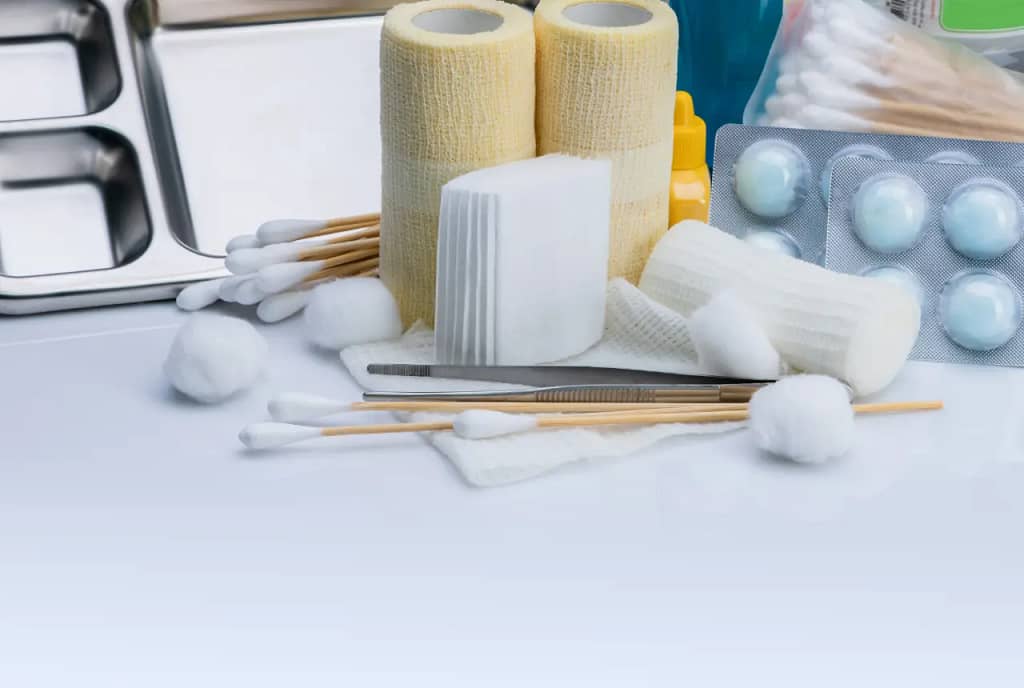
Having a well-stocked home wound care kit ensures you’re prepared to address minor injuries and support the healing process. Here are some essential supplies:
- Wound cleansers: These come in various forms, including normal saline for gentle irrigation and solutions containing specific antiseptics to combat infection. Choose the type based on your healthcare professional’s recommendations.
- Gauze pads and non-adherent dressings: Gauze pads absorb drainage from the wound, while non-adherent dressings (like those with a mesh layer) prevent the dressing from sticking to the wound bed, minimizing pain during removal.
- Bandages and wraps: Elastic bandages provide mild compression to support healing, while self-adherent wraps offer a convenient way to secure dressings without using tape.
- Specialty dressings: Depending on the wound type, your healthcare professional might recommend specific dressings like hydrogel dressings for promoting a moist healing environment or alginate dressings for absorbing excess drainage.
- Pain management tools: Topical pain relievers in creams or ointments can offer localized pain relief, while ice packs can reduce swelling and discomfort.
- Disposable gloves: Wearing disposable gloves during wound care minimizes the risk of infection for both you and the patient.
- Sharps container: If your wound care involves using needles or syringes, a sharps container is crucial for safe disposal to prevent accidental injury.
Remember, this list provides a general guideline. Depending on the specific wound type, additional supplies like compression stockings for venous leg ulcers might be necessary. Always follow your healthcare professional’s instructions and ensure all supplies, especially wound cleansers and dressings, have not expired before use.
Additional Tips for Successful Home Wound Care
While following the outlined steps will lay a solid foundation for successful home wound care, here are some additional tips to promote optimal healing:
- Maintain a healthy diet and lifestyle: Eating a balanced diet rich in fruits, vegetables, and whole grains provides your body with the essential nutrients it needs to repair and rebuild tissues. Adequate sleep is also crucial for healing, so aim for a consistent sleep schedule.
- Stay hydrated: Dehydration can hinder the healing process. Drink plenty of fluids throughout the day, aiming for water as your primary beverage.
- Manage underlying health conditions: Certain medical conditions, like diabetes and high blood pressure, can impede wound healing. If you have any underlying health conditions, closely monitor them and manage them effectively as per your doctor’s guidance.
- Get adequate rest: Your body needs sufficient rest to heal properly. Avoid strenuous activity and allow your body ample time to recover.
- Minimize pressure on the wound: Applying excessive pressure on the wound can slow down healing and increase discomfort. Depending on the wound location, this might involve using pillows for support or elevating the affected limb.
Remember, these are general tips, and it’s crucial to follow your healthcare professional’s specific instructions for your individual wound care plan. If you have any questions or concerns, don’t hesitate to reach out to them for guidance.
Conclusion
Following these 5 easy steps – proper assessment, thorough cleansing, choosing the right dressing, managing pain, and maintaining communication – empowers you to actively participate in your home wound care journey. Remember, successful healing often hinges on the guidance and support of your healthcare professional. Don’t hesitate to ask questions, voice concerns, and seek clarification at every step. Open communication is key to achieving optimal wound healing outcomes.

